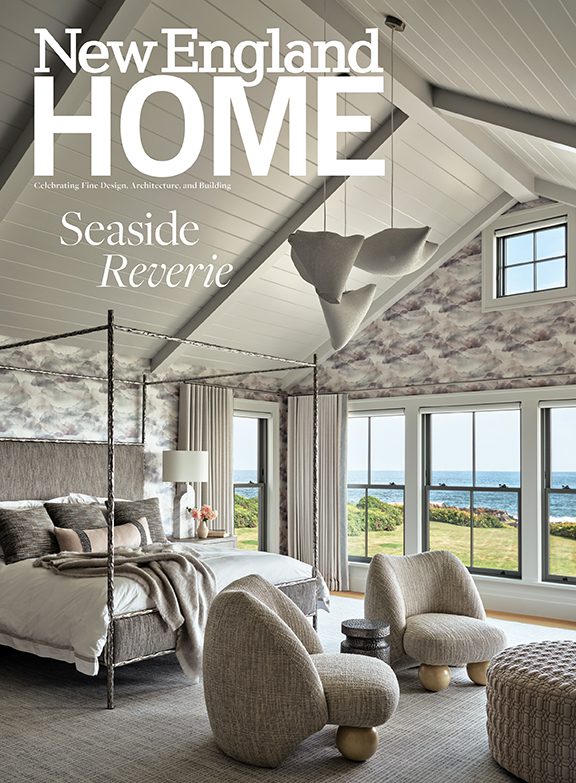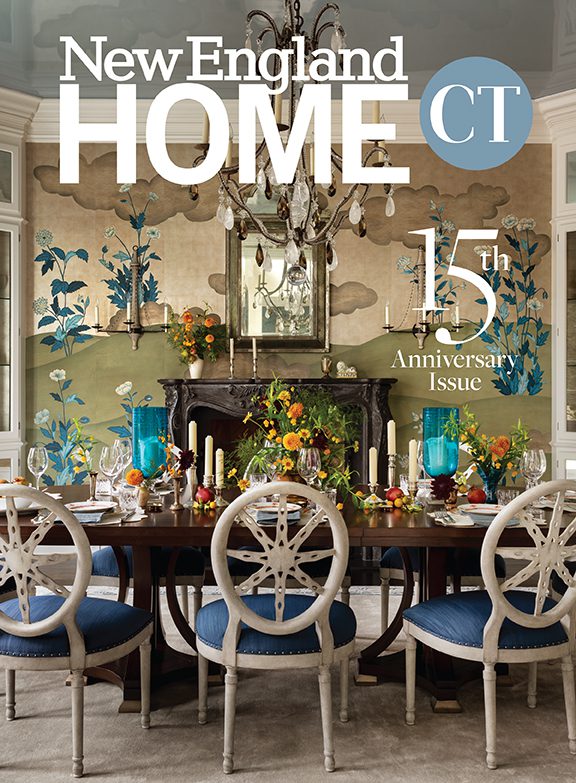Getting Warmer
April 29, 2014
The clever use of texture and color means that even a high-ceilinged city loft can feel snug and livable.
Text by Louis Postel Photography by Eric Roth
A loft in the city can hold big dreams. It’s where we paint the outsize canvases of our lives. It’s where light fills space like a cathedral. That’s the upside. The downside is that twenty-foot-high ceilings can make a person feel very small, and the space can feel more like an airplane hangar than Chartres.
Enter Stephanie Horowitz of Zero-Energy Design in Boston. The loft condominium she designed for a young family in the city’s South End could have been cavernous, but it’s not, thanks to her approach. “Our task was to make the loft more human in scale, more comfortable. And we did that by layering various textures,” Horowitz says.
Her clients had done their homework, using Pinterest and clippings and samples. But what really set the tone was a live-edge walnut dining table designed by the wife’s brother. Taking off from there, Horowitz created planes of interlocking walnut throughout the space: above the kitchen cabinets, across the ceiling, along the floor of the master-suite landing, and down the stairs. “Texture really is the key to achieving human scale,” says Horowitz.
The planes of walnut tie in with other forms and textures in a composition of vertical and horizontal elements. Smooth concrete floors meet a tall field of slate veneer over the fireplace, for instance, and the horizontal metal railing of an interior balcony plays off the foldable walls of opaque glass that define the master suite behind it.
The line where the white kitchen cabinets meet the walnut wall above is another case in point when it comes to defining human scale. The disparate materials come together at the exact level a ceiling would normally be found. Which begs the question: Wouldn’t lowering that ceiling have worked just as well as interlocking textural forms? “Well, you could do it, but then you wouldn’t be taking advantage of this space,” Horowitz explains. She applauds the work of architect David Hacin, who designed the building’s units. “David did a great job designing the basic shell,” she says. “And I believe that city life is all about working with other people’s talent, and not against it.”
In a seemingly simple move that yielded big results, Horowitz relocated the entry fifteen feet to the left. What was a dark hall has become a bright area that does triple duty as mudroom, home office, and an extra sleeping area for guests. The changed position of the entry also defined a new axis for the whole space. Now the door opens to the full cathedral effect of loft living—a skylight with illuminated soffit overhead; mudroom, kitchen, and living room on the left; dining area, spare bedroom, nursery, and stairs to a second floor on the right.
At the far end of the axis, something like the apse of a cathedral, stands the exterior balcony set off by a hedge in a sloping walnut-brown planter. “It’s so nice to be able to just walk out on a balcony like this,” says Horowitz. “In the city, you usually have to get to it by climbing a spiral staircase.”
Back inside, walnut steps lead to a second-floor landing spacious enough to stand as a work area that lets a parent keep an eye on a toddler in the play area below. The landing’s back wall of opaque glass unfolds to reveal the master suite, a space that has a lightheartedness that offsets the formal composition of the larger space. The blue-gray grasscloth wall behind the upholstered platform bed is one sign the mood is changing, the polka-dotted walls of the dressing room another. In the master bath, floor tiles mimic the walnut planes that tie everything together elsewhere in the home. There’s even homage paid to the horizontals of the kitchen cabinets and walls: a custom sink Horowitz designed inspired by a farm trough. One can imagine the smiles as a couple washes up side by side in its snow-white cleft. It’s where those city-loft dreams meet human scale, just as the architect intended. •
Share
![NEH-Logo_Black[1] NEH-Logo_Black[1]](https://b2915716.smushcdn.com/2915716/wp-content/uploads/2022/08/NEH-Logo_Black1-300x162.jpg?lossy=1&strip=1&webp=1)














You must be logged in to post a comment.